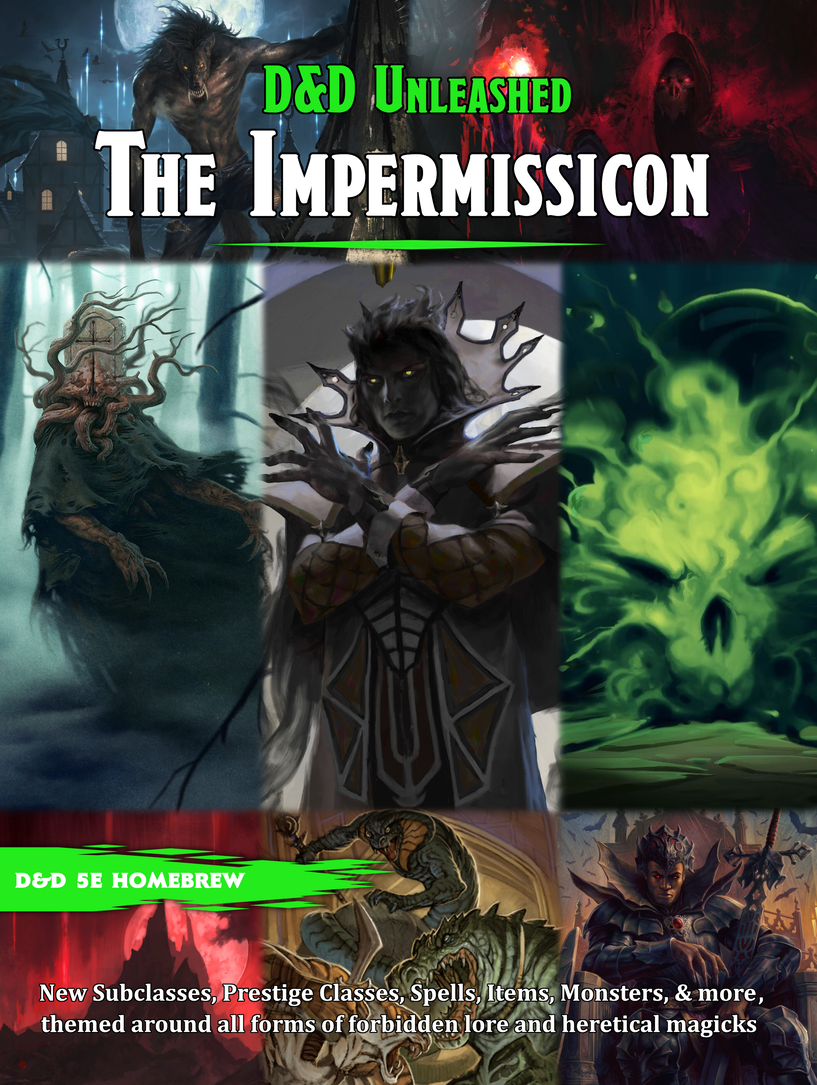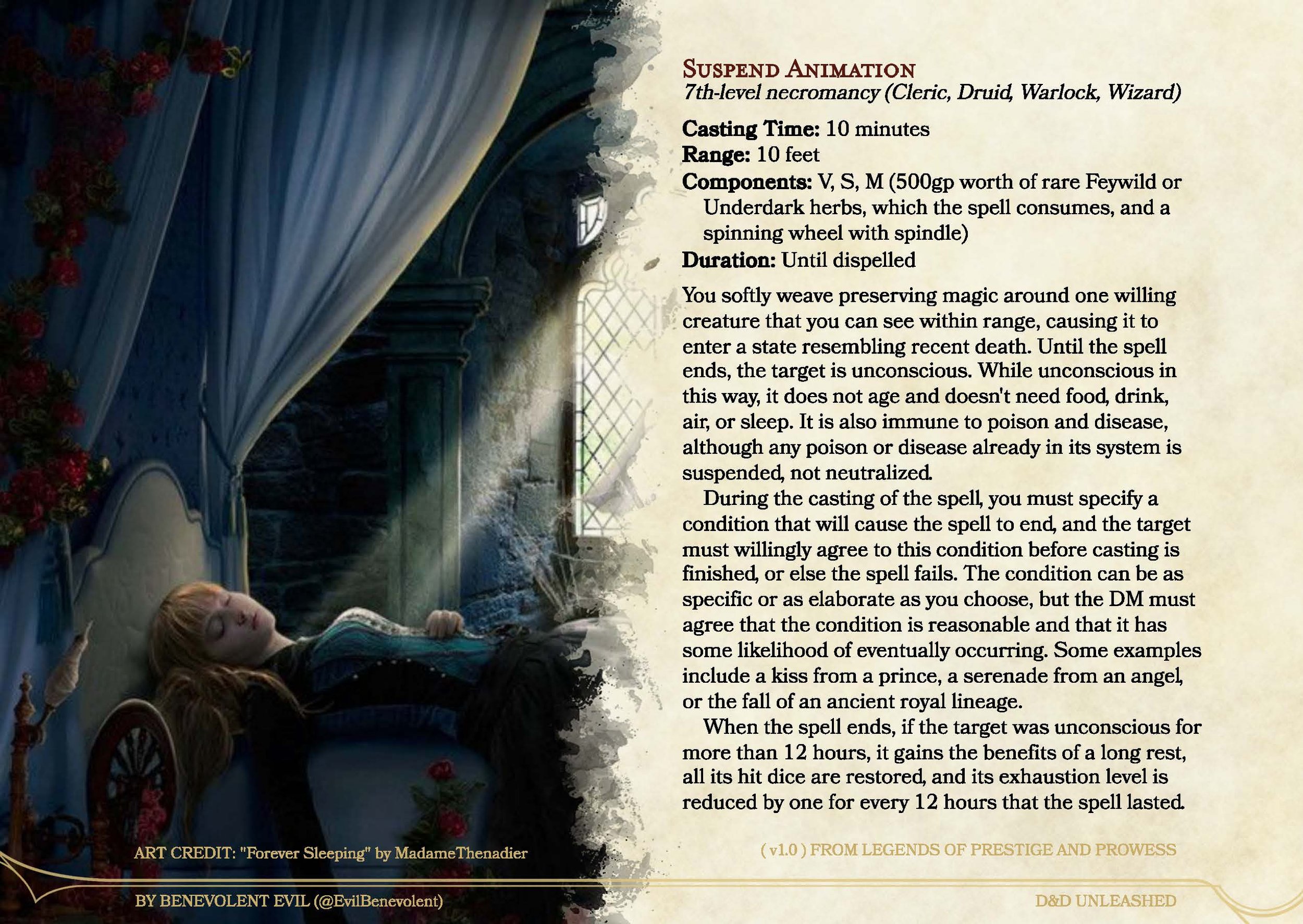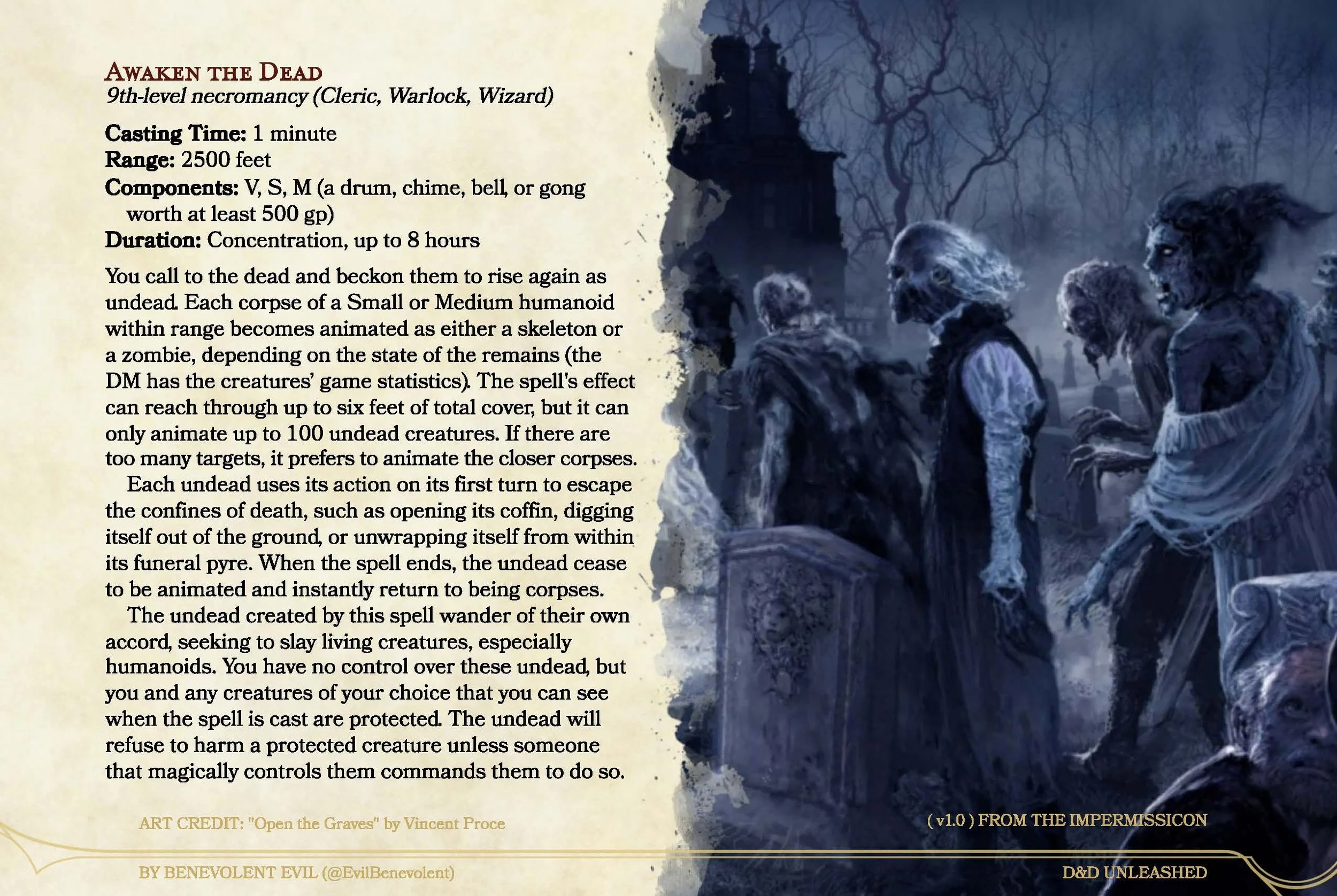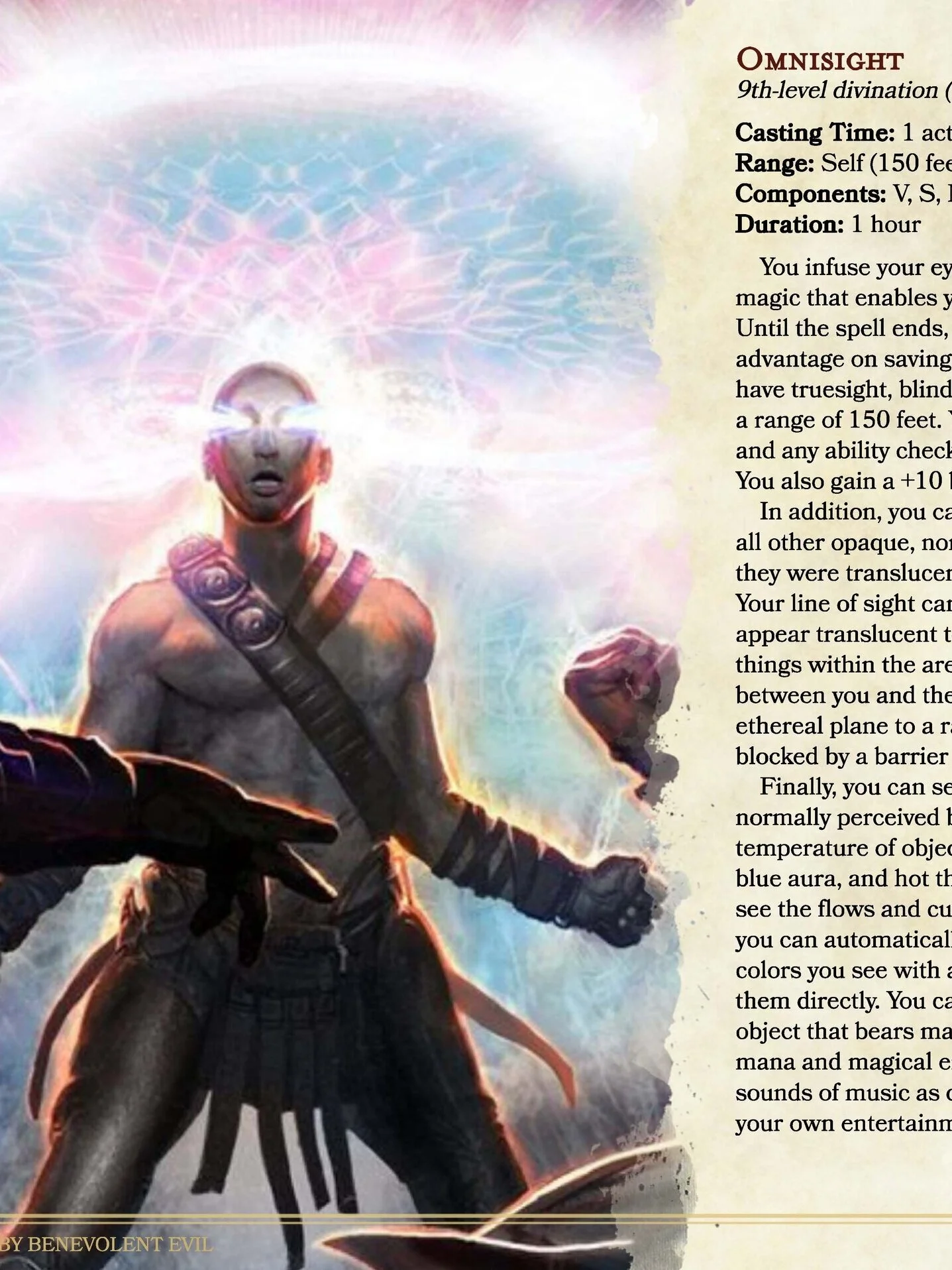New Spell: Suspend Animation
The most updated version of this content can be found within The Impermissicon, a free 254-page compendium that you can download right here, filled with 24 subclasses, 3 prestige classes, 2 feats, 107 spells, 118 spell variants, 91 monsters, 61 magic items, 24 poisons, 23 diseases, and even more goodies themed around lycanthropes, vampires, and forbidden magic for both players and DMs!
“I cannot heal you, but I can place you in a sleep that will sustain your life. You will only wake, I’m afraid, when an antidote is discovered and brought to your lips.”
PDF Link | D&D Beyond Link
From Sleeping Beauty to Futurama, enchanted sleep and suspended animation are common tropes that stretch across both the genres of fantasy and science fiction. Sometimes, as with many fairy-tale princesses, this ageless death-like state of unconsciousness is a curse. Other characters, such as King Arthur, are placed into this resting state to heal from grievous injury and await a time when they will be needed again. Now we’re bringing this classic magic into your D&D game with the new 7th-level homebrew spell suspend animation, from Legends of Prestige & Prowess, our third compendium, focusing on fairy-tales, legends, the past and future, and all the more general content that we’ve designed over the years!
Much like the 9th-level imprisonment spell, this new spell is more likely to be encountered as a narrative element than as a mechanical ability that the PCs use. It takes ten minutes to cast and at least a dozen hours to heal its target, and much of the healing that it provides can be achieved faster by taking a long rest. So the main utility of the spell lies in a few areas: for one, it is a rare instance of healing magic (albeit very limited healing) available to wizards and warlocks (another example being the catnap spell from Xanathar’s Guide to Everything). If you just don’t have access to the magic of any artificers, bards, clerics, druids, paladins, rangers, healing subclasses, or healing magic items that will do (or if such magic doesn’t exist in the setting), you just might have to rely on the best healing a wizard can manage: this spell. Secondly, sometimes a character has accumulated so much exhaustion that it would take most of a week for them to recuperate; if your party lacks access to the greater restoration spell (or if you just don’t have any spell slots to spare on it), you can place your exhausted ally in a dreamless sleep for a day or two to sleep off their fatigue and rise with no exhaustion and all their hit dice restored when you choose to wake them.
However, the third and perhaps most important purpose of casting suspend animation on a friend is to preserve the target’s health for the future. Magic that allows a creature to resist the ravages of time is extremely rare, and while most poisons and diseases can be trivially healed with lesser magic, some rare and fantastical afflictions can’t be cured so easily and often leave little time for finding a solution. Many of the new diseases that will be in The Impermissicon, the upcoming compendium of forbidden magic and lore, are resistant to magical attempts at curing; some of them can’t even be cured by lesser magic at all! Suspend animation provides an answer to these problems whether you’re buying time by preventing your target from aging or by keeping them from succumbing to an affliction.
Just don’t forget where you placed your endlessly-sleeping friend! Unlike the imprisonment spell, since suspend animation can’t be used on unwilling targets, there’s no requirement that the method for breaking the spell is easily determinable by those without the proper knowledge. So if you lose track of your sleeping friend, there’s a decent chance no one who does find them will actually know how to wake them up! Of course, there’s always the dispel magic spell for when you just can’t remember the password to your sleeping hero!










